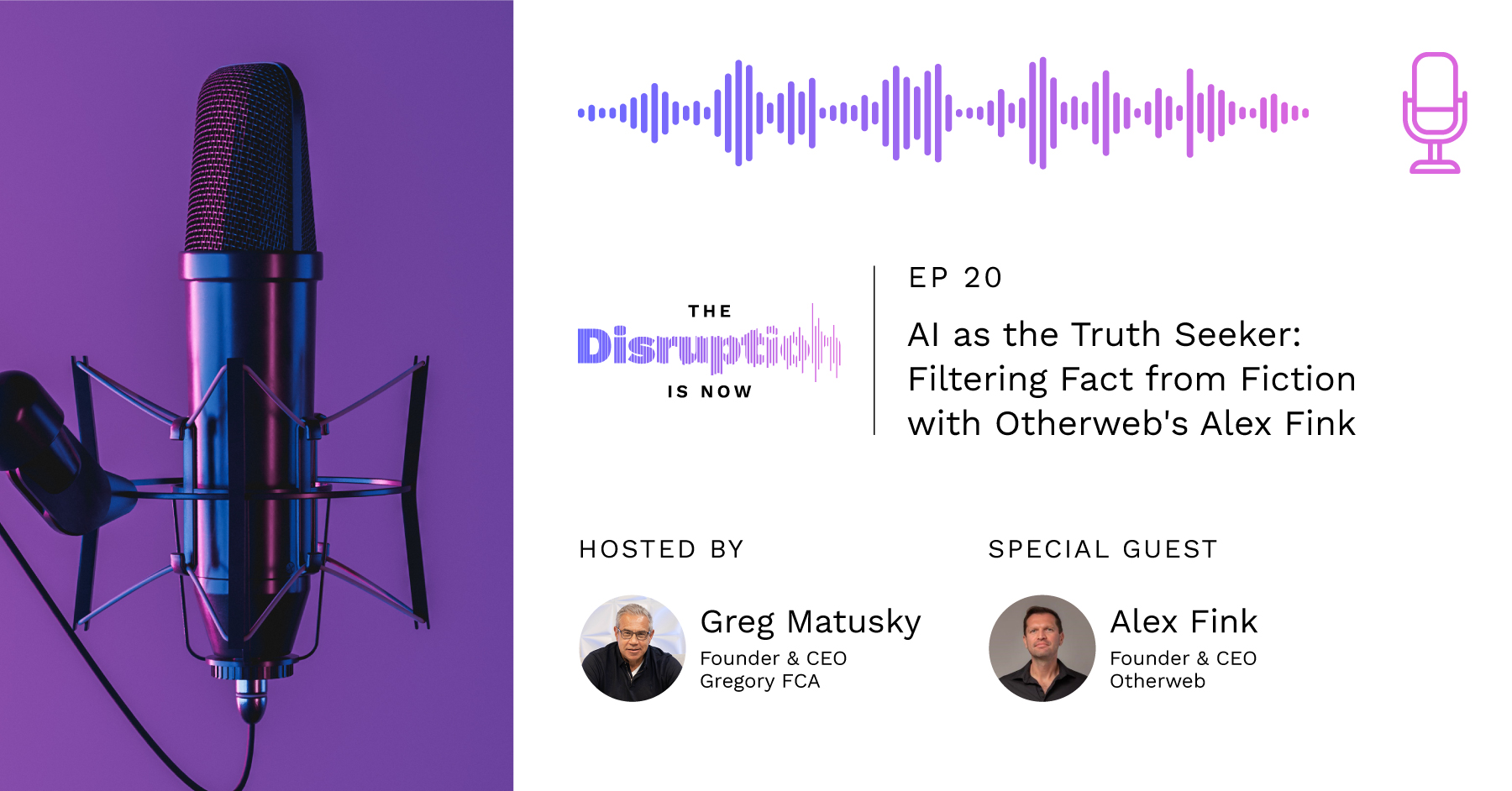The age of machine-generated media is upon us, and its implications are as promising as they are alarming.
AI tools now create news articles, audio clips, images, videos, and more with increasing sophistication. This technological leap brings affordable, scalable content production within reach for publishers and marketers alike. It could also unleash a flood of misinformation. Already downsized newsrooms might struggle to compete with AI systems optimizing solely for clicks and shares.
Yet AI can also help readers sift through the muck to identify quality reporting aligned to their interests. The OtherWeb news reading app, for example, uses AI to filter out clickbait and misinformation and give users more control of their feeds.
Alex Fink, CEO of OtherWeb, joins host Greg Matusky on The Disruption Is Now to discuss the state of media today, how AI is transforming the industry, the future of information, and OtherWeb’s role in it all.
Watch now:
Key takeaways:
Generative AI commoditizes content creation
As AI becomes better at generating content, the supply of digital media will explode. Like any market flooded with supply, prices and wages fall across the board.
Already-struggling publishers will face extreme pressure to cut costs just to compete with AI-generated clickbait. This race to the bottom incentivizes layoffs, quality cuts, and spreading misinformation purely to attract clicks and ad revenue.
Curating quality is essential in the AI age
Tools like OtherWeb cut through low-quality content to give consumers a fighting chance as AI content fills their feeds.
OtherWeb analyzes news articles using AI to gauge quality based on journalistic principles and factual accuracy. It then curates and recommends articles assessed as high-quality, from sources across the political spectrum. This helps readers find substantive reporting on their interests and promotes an informed citizenry.
Media revenue models incentivize a race to the bottom
Dependence on ad revenue and the 24-hour news cycle pressure media to chase clicks over accuracy, pushing them toward misinformation and clickbait.
Meanwhile, staff downsizing and consolidation under private equity hollows out newsrooms. PBS, NPR, and the BBC are three examples of different models that could help backstop quality journalism in the public interest.
The AI transition brings promise and pain
As AI matures, it could displace roles in translation, journalism, and other fields. While AI offers benefits, from easier global communications to free sources of news, it could also disrupt already vulnerable communities. Leaders in business and government must proactively assess and address these ethical dimensions for an inclusive, equitable AI future.
Key moments:
● Alex’s early observations of misinformation in the Soviet Union (2:14)
● How misinformation in the U.S. today compares to the Soviet Union (3:23)
● What’s driving the media today (6:17)
● How OtherWeb assesses the quality of content (8:02)
● Which news outlets score high on quality of information (12:55)
● International vs U.S. press (14:49)
● Small town vs city representation in the media (16:23)
● Vision for OtherWeb and the future of information (18:43)
● Why diversity of news sources is healthy (19:35)
● Greg’s experience using OtherWeb (20:55)
● What’s new and what’s not in the war for your attention (24:54)
● The future of information (31:54)
● The jobs most threatened by AI (34:55)
● AI growing pains (42:50)


